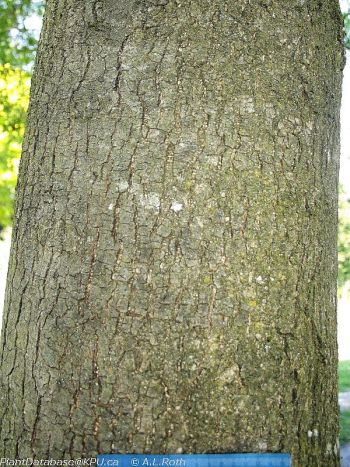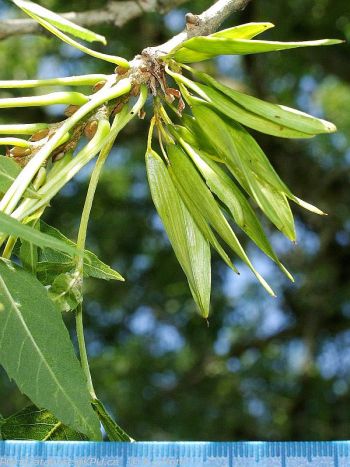Scientific Name:
Fraxinus angustifolia
Pronunciation:
FRAK-si-nus an-guss-tih-FOE-lee-uh
Common Name:
narrow-leaved ash, Caucasian ash
Family Name:
Oleaceae
Plant Type:
Tree - deciduous
Key ID Features:
Tree oval crown; leaves opposite (may appear whorled at tips), pinnately compound, 15-25cm long; leaflets (5-)7-11(-13) per leaf, lanceolate, 4-7cm long x 1-1.5cm wide, glossy, olive-green, margins serrate; flowers purple, April-May; samara 3-4cm long with seed about half this length (absent on some clones). Winter ID: buds brown to dark purplish, ovoid, rounded, about 5mm long; leaf scar crescent to D-shaped.
Habit:
Spreading, Upright
Form:
Oval - vertical
Texture:
Medium - fine
Mature Height:
10 - 15m
Mature Spread:
10 - 15m
Growth Rate:
Moderate
Origin:
Africa - northern, Europe (Mediterranean)
Hardiness Rating:
Zone 4: (-34 to -29 °C)
Exposure:
Full sun
Soil/Growing Medium:
Rocky or gravelly or dry, Well-drained
Water Use:
Moderate
Landscape Uses:
Fall interest, Shade tree, Specimen plant, Street (boulevard tree), Tall background
Additional Info:
Google. Cultivars shown may include F. 'Raywood' (common street tree with narrow leaflets creating a finer texture).
Leaf Morphology:
Form:
Compound
Arrangement:
Opposite
Texture/Venation:
Soft flexible, Pinnate venation
Surfaces:
Lustrous
Compound Leaf:
Odd-pinnate, Leaflets stalked
Colour in Summer:
Green, Dark-green
Colour in Fall:
Orange, Red
Shapes:
Lanceolate
Apices:
Acuminate
Bases:
Cuneate
Margins:
Serrate
Additional Info:
Spectacular fall colour
Bark Morphology:
Smooth, Deeply fissured
Bark or Stem Colour:
Grey
Leaf Bud Type:
Ovoid
Leaf Scar Shape:
Crescent shaped
Maintenance:
Low
Pest Susceptibility:
Anthracnose, Stem borer insects (Pest resistant, Disease resistant, Drought tolerant)
Specific Pests:





